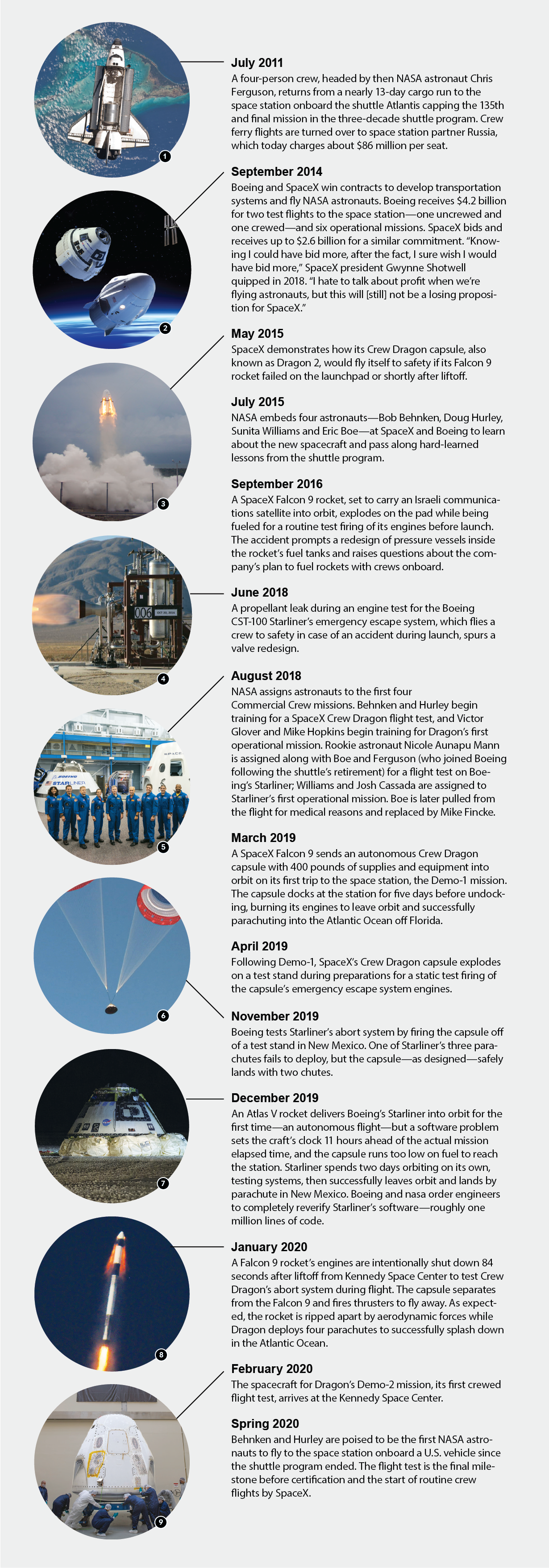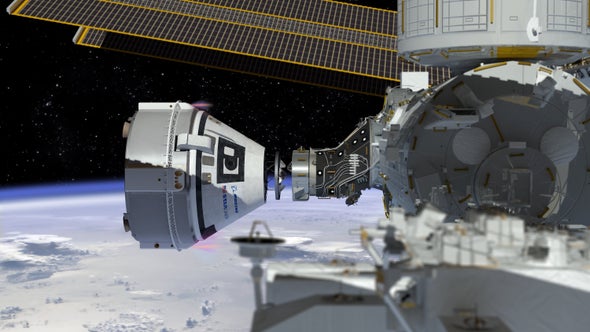Editor’s Note (4/22/20): On April 17 an official launch date of May 27 was announced for the historic first crewed test flight of SpaceX’s Crew Dragon spacecraft. The craft is set to carry two astronauts to the International Space Station and back.
When the space shuttle Atlantis landed and rolled to a stop at Florida's Kennedy Space Center in 2011, bringing the 30-year shuttle program to a close, NASA hoped to fly U.S. astronauts onboard privately developed space taxis within four years. But budget shortfalls added two years to development schedules, and then technical problems with parachutes and launch escape systems pushed key flight tests to 2019. Now SpaceX—the company selected along with Boeing in 2014 to fly crews to and from the International Space Station—is finally on the cusp of launching two NASA astronauts on a long-awaited trial run. Boeing plans to follow, possibly this year, although the company ran into software glitches during its uncrewed test flight last December. Here's a look at the ups and downs of NASA's decade-long effort to restore human orbital spaceflight in the U.S.


